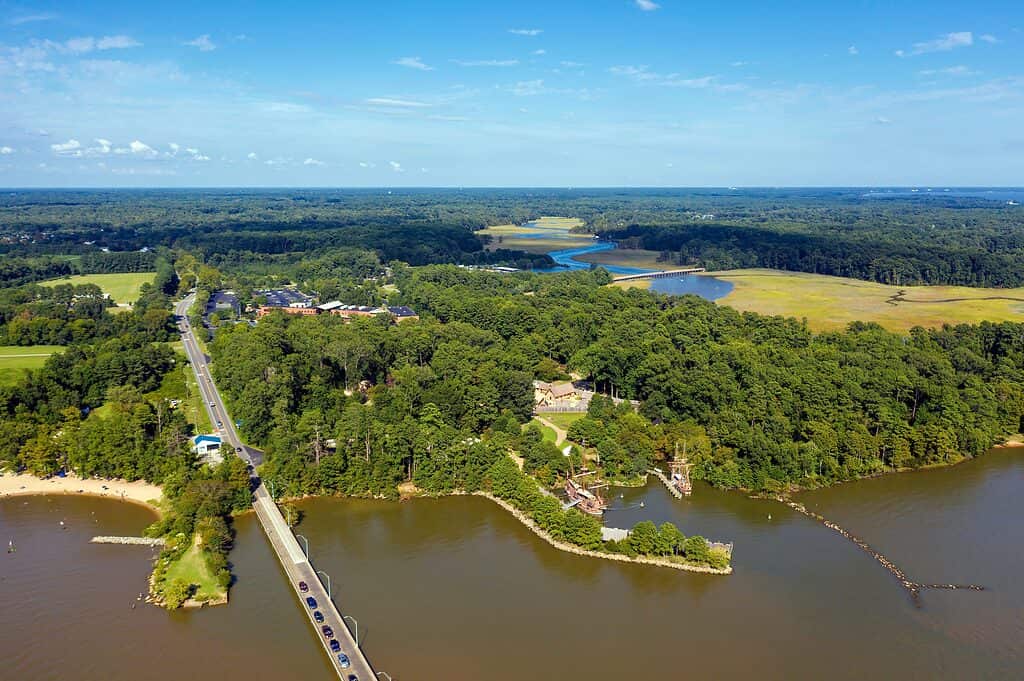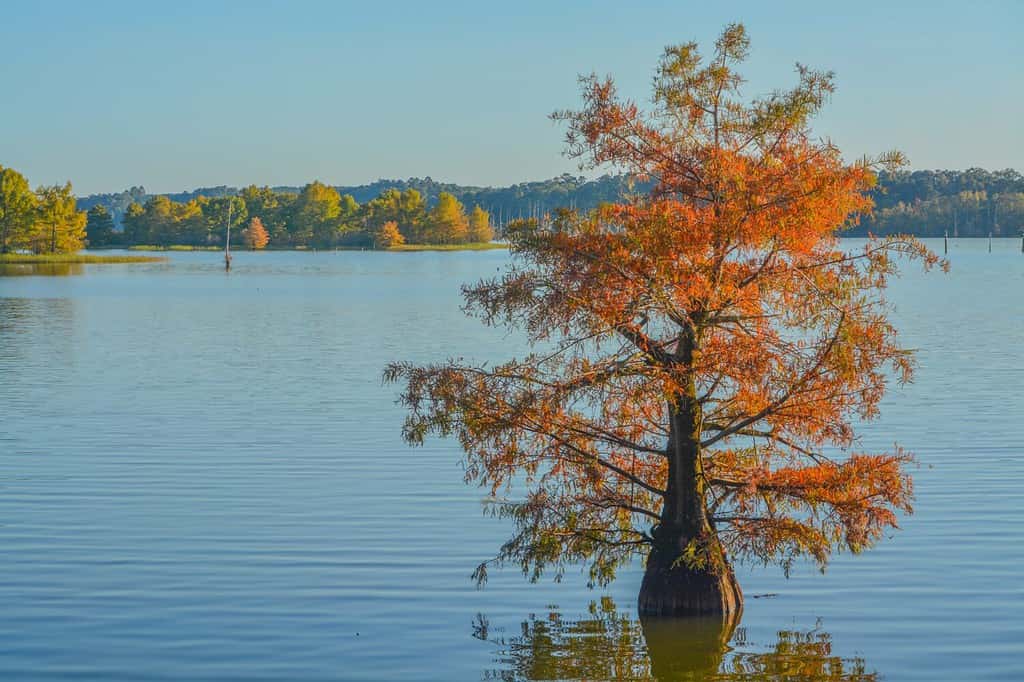
Jamestown stands as a mark of the early European settlement in Northern America. The town is unique, with a history dating back over four centuries. But Jamestown predates the United States’ birth by more than 169 years.
This town was essential in the New World as it was the first permanent English settlement. Also, it played an important part in the shaping of American history. Its legacy continues to excite tourists from all over the world.
Today this town honors its heritage as a reminder of the spirit of resilience and adventure that birthed the United States. You can witness the merging of the old and new towns through historical landmarks coexisting harmoniously with modern amenities.
In the spirit of exploring Jamestown, we will go deep into its great history, unmasking its inhabitants’ stories. Also, we will explore its legacy in today’s American cultural landscape, from its struggles to its status as a national treasure. It serves as a testament to the great nation existing today.
History of Jamestown
Three European ships left for Virginia on December 6, 1606. These ships were the Godspeed, the Susan Constant, and the Discovery. The ships carried 104 English men intent on settling in North America. On May 13, they settled in Jamestown, naming it after King James I and creating the first North American permanent settlement.

Jamestown is the oldest town in Virginia.
©John Couture/Shutterstock.com
There are several reasons why they chose the location that became Jamestown. First, the area had everything as requested by the Virginia Company, which funded their ideal settlement spot. Some of their reasons include the following:
- The place was between three water bodies — though it was not a full island, it was a good inlet. Hence, the town was easy to defend in case of a Spanish attack.
- Jamestown had deep waters to tie ships to the shoreline.
- The area was safe from the native population.
After choosing the location, the Virginia Company sent a list of officials. These names were sealed in a box, and each ship had its own copy. From the lists, Edward Maria Winfield was the new Virginia’s first president.
The council members were Christopher Newport, John Ratcliffe, Bartholomew Gosnold, John Martin, John Smith, and George Kendall.
The Fort
The fort was built by June 15. It had a bulwark on every corner in a triangle shape with four and five artillery pieces. This design protected the settlers from possible attacks, specifically from the local Powhatan Indians who resented the Europeans for stealing their land.
On June 22, Newport’s captain left for England to secure settlement supplies. Shortly after, the settlers were infected and died from different diseases contracted from drinking salty water from muddy rivers. Overall, the deaths were high; many died from fevers, fluxes, swellings, and wars.
Also, food became scarce until Chief Powhatan sent gifts to the English and saved them from famine and starvation.
Second Group
Another group arrived on May 2, 1610, after being stranded in Bermuda. Their arrival changed the narrative in the North American English colonies. This new group restored hope to the existing settlers.
The new group brought shipbuilding techniques and survival skills, helping the remaining settlers to overcome challenges. It spawned the success and growth of Jamestown to present day.
Location of Jamestown
You will find Jamestown in present-day Virginia, located about two and a half miles southwest of Williamsburg and northeast of the Powhatan River. Three rivers surround the town: Sandy Bay, Back River, and James River.
Jamestown, Williamsburg, and Yorktown make up the Colonial Virginia Historic Triangle. The triangle has two main historical heritage sites: the Jamestown settlement complete with a museum and fort replica, and a Powhatan Indian hamlet.
Today this place is under Preservation Virginia and National Park Service as an archaeological and historic site.
Because Jamestown is 169 years older than America, the town tells a story of the region. It gives a unique view of the colonial era and American identity.
The town has a scenic setting that enhances its historical aesthetic. Its geographical location was important in developing and improving communication and trade with its neighbors.
Lastly, the area is naturally beautiful, with pristine rivers, rolling hills, and lush forests. Also, this area offers diverse wildlife and natural surroundings.
Wildlife You Will Find in Jamestown
After many years, the landscape in Jamestown hasn’t changed drastically, thanks to the National Park Service and Preservation Virginia, which protects the island woods, acreage, and the whole ecosystem.
If you keep an eye out, you will see colorful life, including the following:
Bald Cypress Tree
This tree is essential in the history of the oldest town in Virginia. The tree thrives on the marshes and shores of Jamestown Island. Virginia Indians used it to make dugout canoes. These trees are among the deciduous confers shedding their needles in the fall. At the same time, they can live for a thousand years.

Bald cypress trees thrive in marshes.
©Norm Lane/Shutterstock.com
Tree rings scientists used these trees for environmental studies of the past. The results show a severe drought occurred 770 years before 1606. This drought had a negative impact on the English colonist many years later, in 1607.
Bald Eagles
These birds do well in Jamestown due to the abundant waterways and tall pine trees. You will notice many nests around the island.
However, the species became endangered due to increased pesticide use in the 1970s. Today, there is an increase in their population due to federal law and conservation efforts. Luckily, by 2014, there were about 200 pairs of bald eagles along the James River. If you visit the area in spring, you may notice new eaglets in the nests.
The early English colonialist hunted the eagles for food. They also enjoyed watching them fight!
Great Blue Heron
While on a peaceful drive to Jamestown, you will find these birds on the left towards Back Creek. These birds are magnificent and prolific on the shores and in the marshes. The birds mostly rely on fish but also consume small and young mammals. Herons make nests in trees, and you can see them during spring when they are most active. Archaeological evidence shows that the settlers enjoyed these birds in their diets.
You can see different bird species during winter. They include cranes, swans, herons, brants, geese, wigeon, duck, parrots, and pigeons.
Raccoon
Settlers in Jamestown had never seen a raccoon before arriving in the New World. You can see raccoons along Island Drive today, especially in the evening. Interestingly, their bones were found in Jamestown’s fort during an excavation of food remains, indicating the colonialist hunted them for food.
Some archaeologists found raccoon remains with intensively worn teeth. So, some people suggest they could have been kept as pets by the colonialists. These animals don’t live long enough in natural settings to get such a wear pattern.
Red Fox
Although the red fox is common in North America, Jamestown has an especially large population. You will see these animals as you travel along Island Drive in the early morning or the afternoon.
Gray fox remains have also been found at Jamestown’s fort. At first, the gray fox was more common. But humans in the early centuries took advantage of the red fox, which led to their increase. Red fox fur was more valuable to Virginia Indians and English colonialists.
Sturgeon
Sturgeons lurk off the Jamestown River shores from spring through fall, though they’re difficult to spot. This fish is massive, growing up to 16 feet long and weighing over 800 pounds. Sturgeon is among the oldest species of fish on the planet. Their fossils date back to 100 million years. The fish lives in both salt water and fresh water.
In Colonial times, this fish was an important part of settler’s diets. While this fish was served to royals in the 17th century, in the oldest town in Virginia, it was for everyone. Today, the fish is endangered. But biologists use the remains at Jamestown to study their history.
In addition to this huge fish, you will also find catfish, shad, bass, and other freshwater fish species.
Otters
These animals are Virginia and North American natives residing along the rivers and marshes. Historical records show that English settlers ate these animals to save themselves from starvation.
By the 20th century, otters were almost extinct, thanks to the growth and development of the fur trade. But there was a change after the establishment of wildlife conservation attempts in the 20th and 21st centuries. Today, these animals are now happy and abundant on Jamestown Island.
Turtles
Walk across the visitors’ center footbridge to find turtles in Jamestown, in the tar swamp and pitch. There are many species, including box turtles, snapping turtles, sliders, spotted turtles, terrapin, painted turtles, and striped mud turtles.
In the early days, turtles were part of the colonial diet. Their remains have been found together with other animal remains from excavations. Also, archaeologists found sea turtles believed to have come with the Bermuda shipwreck survivors.
Where is Jamestown Located on a Map?
Jamestown is located in eastern Virginia. It is an amazing and significant historic site. Historic Jamestowne preserves the ruins of the first permanent English settlement in North America. The site encompasses the remnants of the 18th-century Ambler Mansion and features the Archaearium archaeology museum, which showcases artifacts from the region’s early settlers.
Here is Jamestown on a map:
The photo featured at the top of this post is © iStock.com/ClaudineVM
Thank you for reading! Have some feedback for us? Contact the AZ Animals editorial team.






